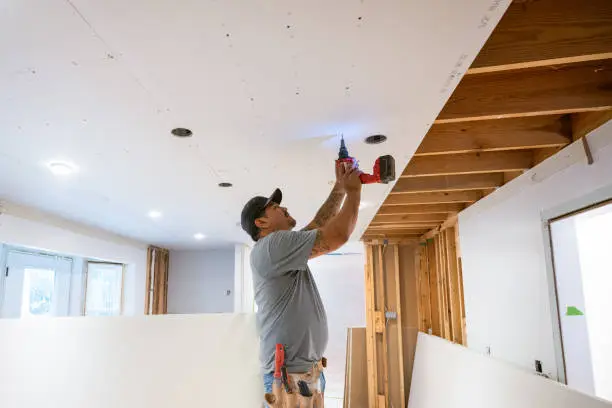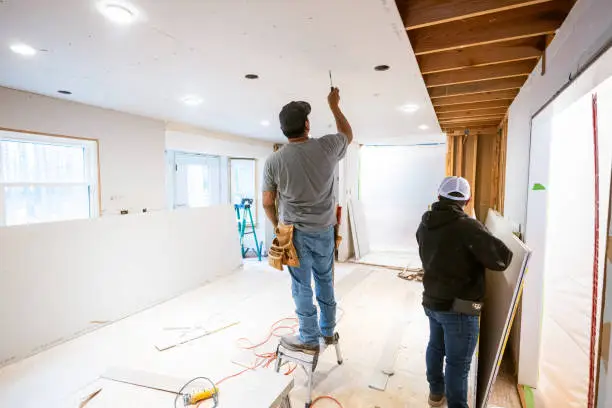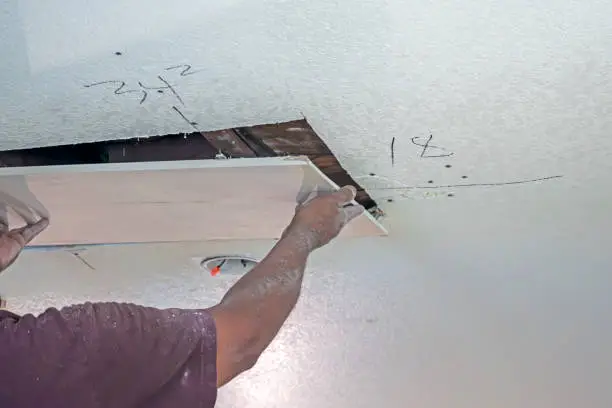More than just a fast fix is needed to restore walls to their former splendour; accuracy and skill are needed to create a perfect finish that complements your house. It’s critical to choose the best drywall repair service, whether you’re dealing with small dings, unsightly holes, or larger damaged sections. The proper professionals will guarantee that your walls are uniform, smooth, and defect-free, preserving the aesthetic appeal and market value of your house. Continue reading to learn the most important factors to consider when looking for the best drywall repair solution and how expert craftsmanship can significantly impact the outcome.
What Matters Most When Finding the Right Drywall Service
Looking to restore your walls and achieve a flawless finish? No matter how extensive the damage, choosing the Good Samaritan Services LLC team is the key to impressive results. Here’s what you should look for in a top-notch drywall repair project:
Must consider these things while finding the best drywall repair service:
- Flawless Surface: After repairs are complete, the drywall should feel perfectly smooth with no noticeable bumps, seams, or blemishes.
- Consistent Appearance: Good lighting, especially from the side, will reveal that the wall’s surface is uniform and free of irregularities.
- Seamless Connections: There should be smooth, invisible transitions where walls meet ceilings or corners, creating a continuous, clean look.
- Professional Sanding: A quality job means you won’t see or feel any sanding marks—just a clean, polished finish.
Expect these standards to ensure your drywall restoration blends perfectly into your home.

Drywall Done Right: Key Steps to Protect Your Walls
To protect your walls, begin with the correct drywall repair. These steps will help you get a finish that lasts and looks good. This starts with getting the area ready, figuring out the damage, carefully patching, sanding, and painting.
Follow these steps for a seamless drywall repair:
- Step 1: Prepare the work area and assess damage
Start by shielding your floors and furniture using drop cloths. Block air vents to keep dust from spreading. Clean the damaged part of the wall by removing loose pieces, peeling paint, or drywall that’s falling apart. The repair will be different depending on whether it’s a small dent, a medium hole, or a big puncture.
- Step 2: Apply the patch or filler
Use a putty knife to fill in small holes with a spackling compound and smooth it out. Cover the damaged area with a thin layer of joint compound after applying a self-adhesive mesh patch for medium holes up to six inches. For a larger hole, a new piece of drywall must be cut to size and secured with screws to a wooden backing.

- Step 3: Apply the joint compound
To “feather” the repair into the surrounding wall, apply a thin, smooth layer of joint compound over the patched area, extending it past the edges. It might take a few hours for the first coat to completely dry. To further feather the edges of larger repairs, apply a second, wider coat and let it dry completely.
- Step 4: Sand the surface smooth
Use a fine-grit sanding block to gently sand the repaired area until it is flush and smooth with the rest of the wall after the last coat of joint compound has dried completely. Because drywall dust is so fine, wear a dust mask for safety. To prepare the surface for the following step, use a moist cloth to wipe away any last bits of dust.
- Step 5: Prime and paint the repaired area
To guarantee that the final paint color is consistent and does not show through the patch, apply a high-quality primer over the repaired area. Once the primer has dried, paint the area, being careful to match the surrounding wall’s color and texture. Your drywall repair will be almost undetectable after this last step.

Conclusion
In addition to improving the aesthetics of your walls, properly repaired drywall increases the value of your house, conserves energy, and creates a cozier atmosphere. If you pay for good service and use the right methods, your walls should stay smooth and strong for a long time. Remember that hard work pays off in the long run. It creates a pleasant atmosphere in your house and prevents issues from developing later. Your home should have excellent service, so always expect excellent drywall work and don’t settle for anything less than flawless.
Faqs
How long does drywall repair take?
Most repairs can be completed in a few hours to a day, depending on the size of the damage.
Will the repair be visible after painting?
A professional repair blends seamlessly, making patches virtually invisible.
Is it safe to do drywall repair myself?
Small repairs can be DIY, but larger or complex damage is best handled by pros.
What are the most common types of drywall damage?
The most frequent damage includes small holes (from nails or hooks), dents and dings, cracks along seams or due to settling, water damage, popped nails or screws, and bulging or peeling paint.
What causes drywall to crack or get damaged in the first place?
Causes include foundation or settling shifts, changes in humidity and temperature, poor initial installation (like improper taping or using wrong fasteners), water leaks, or repeated physical impact.
